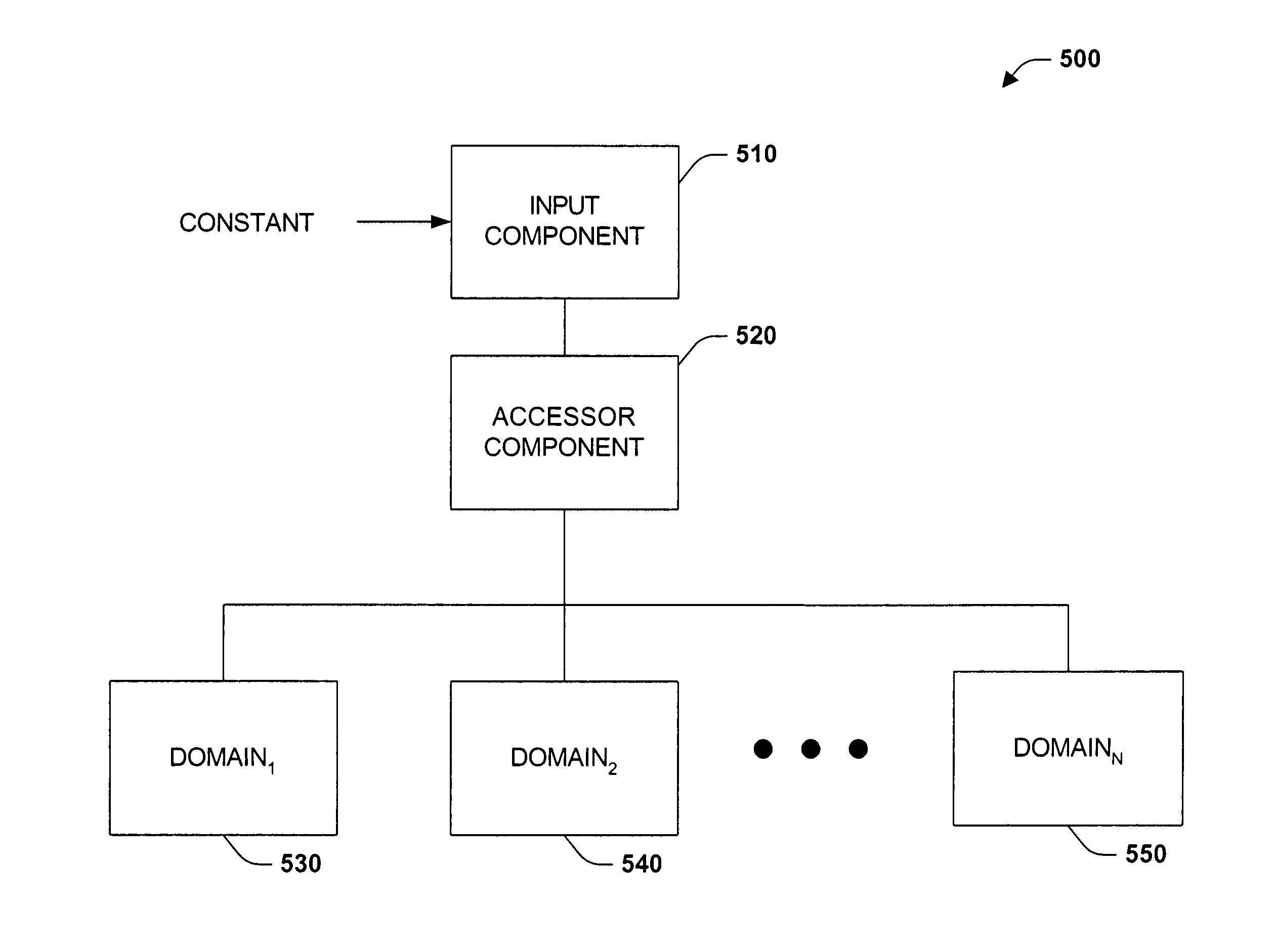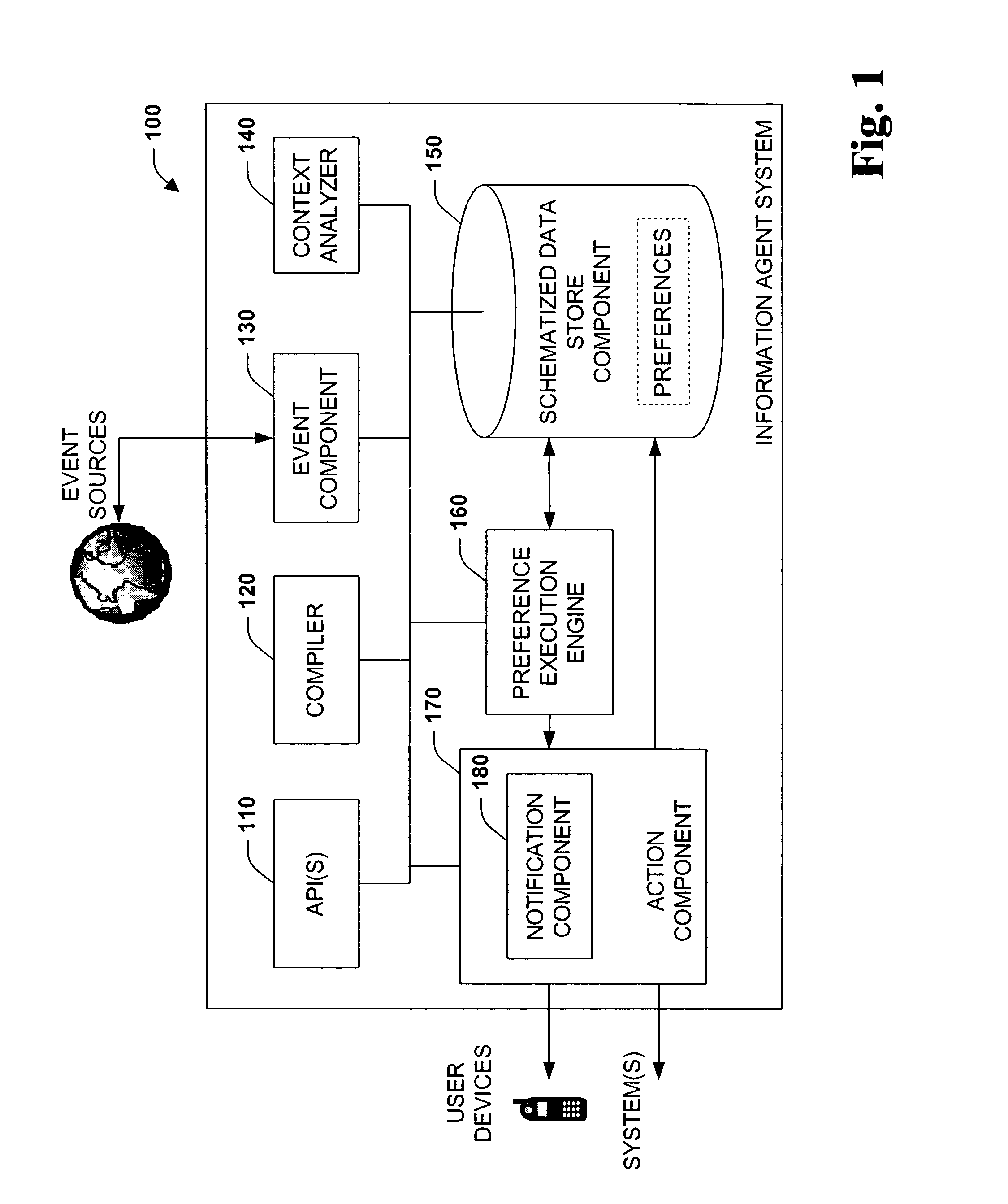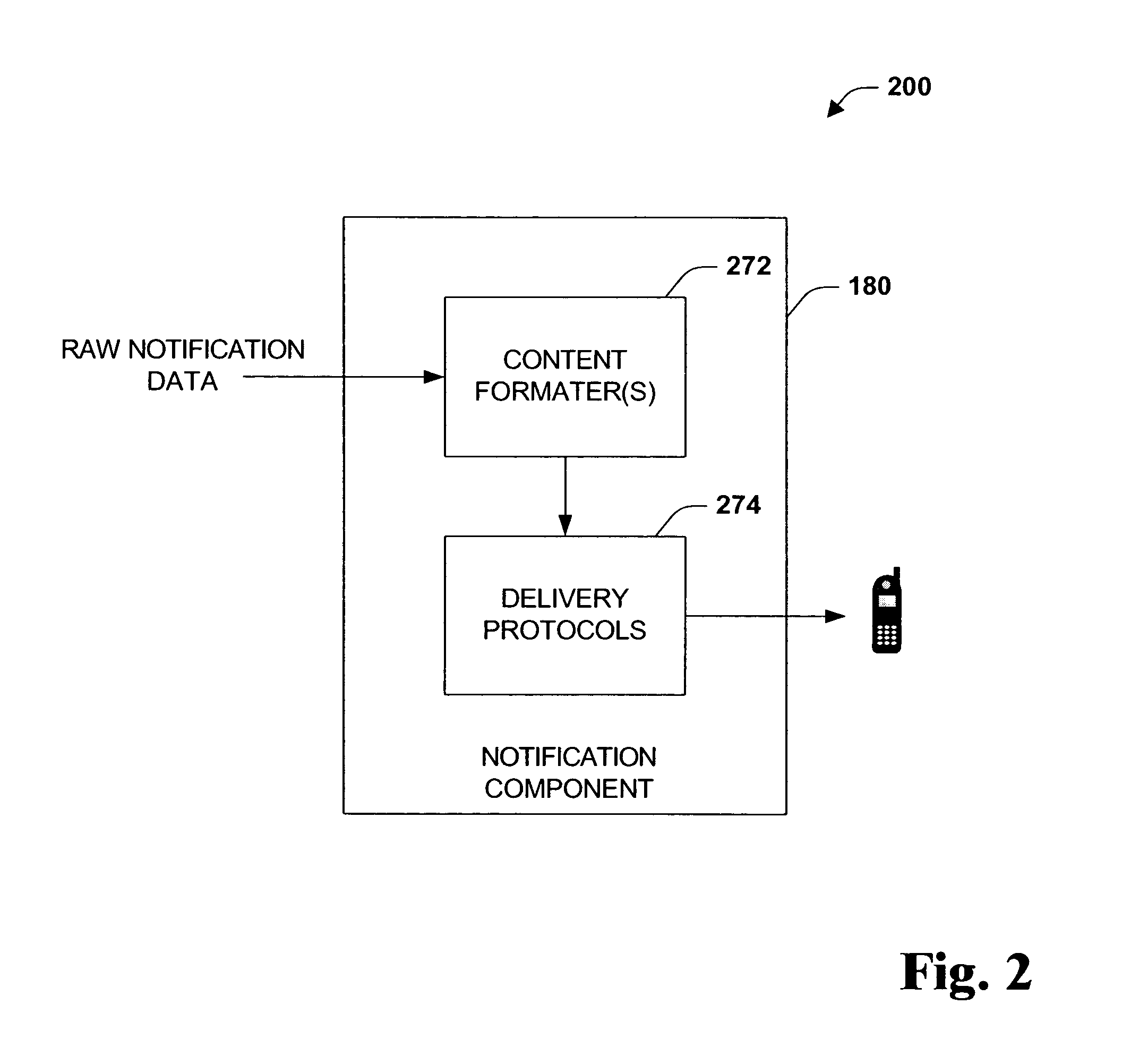System and method for extending application preferences classes
a technology of application preferences and system and method, applied in the field of computer systems, can solve problems such as unreasonable expectation of programs written in traditional programming languages, and achieve the effect of rich relationships and facilitate information exchange or sharing
- Summary
- Abstract
- Description
- Claims
- Application Information
AI Technical Summary
Benefits of technology
Problems solved by technology
Method used
Image
Examples
example 1
Assume that the ConditionResults Table has the following two rows in it.
[0225]
Bool,Cond. Id,Pref. Id,Event Id111100From (Mary)121100Contains (CA)
[0226]There is an AND between these two conditions in Preference 1. Consequently, this preference will evaluate to true only if both the above conditions are true. Both these conditions belong to the 1st ANDGroup whose condition count is 2. Therefore, when the above table is joined with the AndGroupMembership table, the following table results:
[0227]
Bool,Cond. Id,Pref. Id,Event Id,AndGroupId11110011211001sum = 2
After the group by is performed, we get the following row
[0228]
sum (Bool),Pref. Id,Event Id,AndGroupId211001
Now (Pref. Id, ANDGroupId) form a key for the ANDGroups Table. The look up there provides a condition count of 2, which is equal to sum (Bool). Therefore the preference is true and it can be added to the result table 730.
example 2
Assume that the ConditionResults Table has the following two rows:
[0229]
Bool,Cond. Id,Pref. Id,Event Id132101From (Bob)142101Contains (IA)
There is an OR between these two conditions in Preference 2. Thus, this preference will evaluate to true only if either of the two conditions are true. These conditions belong to the 2nd and 3rd ANDGroups respectively and whose condition counts are both 1. Therefore, when the above table is joined with the AndGroupMembership table, the following table results:
[0230]
Bool,Cond. Id,Pref. Id,Event Id,AndGroupId13210121421013
After the above table is grouped we get,
[0231]
sum (Bool),Pref. Id,Event Id,AndGroupId121012121013
Both the above rows will satisfy the having clause and hence after the distinct is applied we find that the preference (Pref. Id=2, Event Id=101) will be copied into result table 703.
example 3
For this final example, assume that the ConditionResults Table has the following two rows:
[0232]
Bool,Cond. Id,Pref. Id,Event Id1137102From (Bob)1147102Contains (Work)
Recall that the condition on preference 7 really was[0233]From (Bob) and !Contains (Work).
In the presence of NOTs, the 1 in the second row above is changed to a −1 in accordance with an aspect of the present invention. The following is an exemplary query that provides such functionality:[0234]update ConditionResults[0235]set Bool=−1[0236]where cond. Id IN (select cond Id[0237]from Not)
Furthermore, it should be noted that if a smart query optimizer is employed and notices that the NOT table is empty, the query should return in a flash. Therefore, the above table becomes:
[0238]
Bool,Cond. Id,Pref. Id,Event Id1137102From (Bob)−1147102!Contains (Work)sum = 0
Both these conditions belong to the 11th ANDGroup. From the ANDGroup table it can be determined that the condition count of this preference (preference, ANDGroup) is 1. S...
PUM
 Login to View More
Login to View More Abstract
Description
Claims
Application Information
 Login to View More
Login to View More - R&D
- Intellectual Property
- Life Sciences
- Materials
- Tech Scout
- Unparalleled Data Quality
- Higher Quality Content
- 60% Fewer Hallucinations
Browse by: Latest US Patents, China's latest patents, Technical Efficacy Thesaurus, Application Domain, Technology Topic, Popular Technical Reports.
© 2025 PatSnap. All rights reserved.Legal|Privacy policy|Modern Slavery Act Transparency Statement|Sitemap|About US| Contact US: help@patsnap.com



